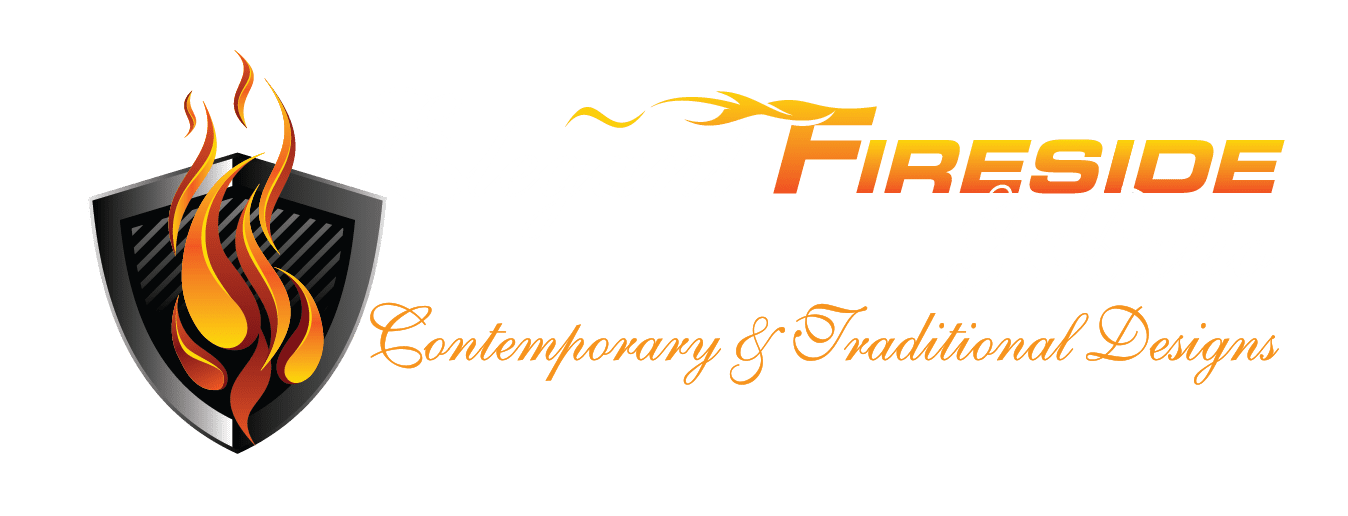With wood burning quickly becoming obsolete, more and more consumers are changing over to gas logs or fire glass systems. For most people; the fireplace is more of a source of ambiance than heat. This article will explain the nuances of each gas log type, and it will cover the other options that exist outside of gas logs. Lastly, we will talk about what you need to do in order to make a gas log or fire glass purchase.
Gas Logs
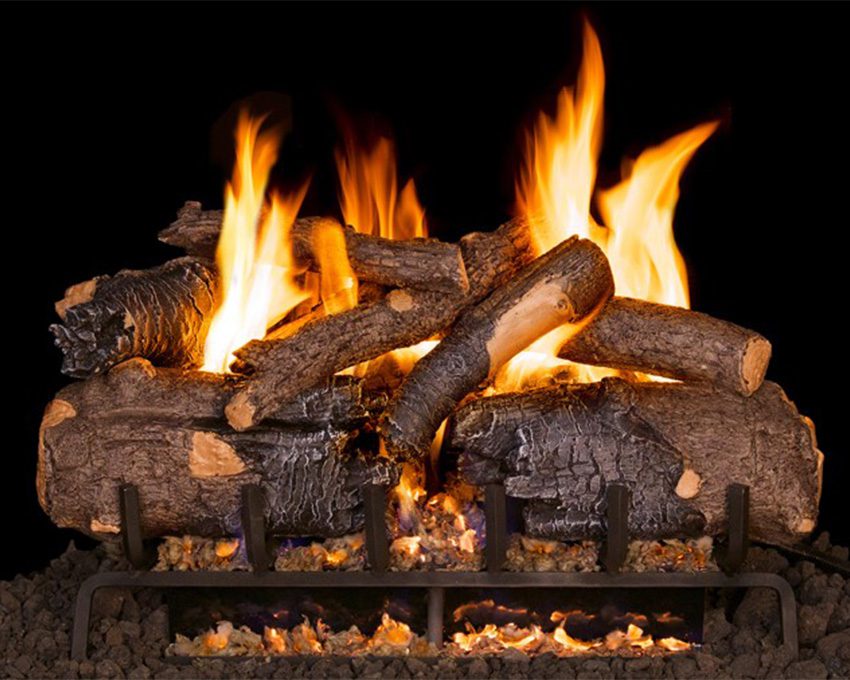
There are two basic types of gas logs available.
- Vented
- Ventfree/Unvented
Vented Gas Logs
Vented gas logs are the most popular version of gas logs. Vented means that the logs have to be used in a safe to operate wood burning fireplace with the damper fully open. These log sets are the most realistic in appearance and will have the most attractive flame pattern. They are manufactured using a concrete/ceramic blend or ceramic fiber (also known as radiant logs).
Concrete/ceramic logs will generally have higher detail in things such as bark pattern or paint coloring, and are generally the more attractive of the two when not in use. Ceramic fiber or radiant gas logs are becoming the new favorite. These logs do not have the deep bark textures and complex paint patterns found in their ceramic counterparts, but they do glow when hot and radiate 3-4 times the heat. These logs actually look like burning wood when hot!
Vent free/Unvented Gas Logs
Vent free gas logs are designed with one thing in mind, heat. The function of vent free logs is to provide a secondary source of heat for small to large spaces. These log sets will always have a pilot light and an Oxygen Depletion Sensor (O.D.S.). Vent free gas logs are great for heating; however, they generally lack the ambiance or attractiveness of vented gas logs. These log sets can only be used in masonry wood burning fireplaces, manufactured vent free fireboxes, or manufactured masonry vent free fireboxes. Most prefabricated wood burning fireplaces do not allow for the use of vent free logs with the damper closed!
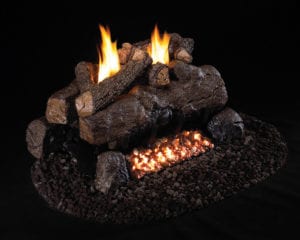
Vent free gas logs should not be used in the following situations:
- In a home where someone has breathing difficulties. i.e. asthma, COPD, etc.
- In a manufactured home.
- In a prefab/zero clearance manufactured wood burning fireplace.
- In a home that has been heavily insulated with foam or similar construction methods, or in a home with a lack of make-up air.
- In a bedroom or bathroom.
- Near a TV, art work, pictures, or anything that would be damaged in the oven at 150-250 degrees.
Ventfree gas logs are for high heat output applications ONLY!
Fire Glass and Modern Media Gas Burning Systems
Fire glass and modern media style systems have one goal in mind; ambiance. These systems are rarely; if ever, manufactured with the production of heat in mind. These particular set-ups are really great for homes in moderate and temperate climates where heat is less desirable. These systems are generally going to have a longer “burn” season due to their lack of heat output.
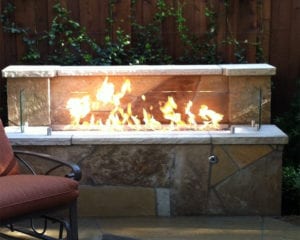
Fire Glass
Fire glass is a system. It has a proper burner setup, and a minimum/maximum depth of glass. You cannot just pour the glass over a log lighter pipe. Fire glass can be used indoors or out, and has the least amount of maintenance of all the different gas hearth systems.
Modern Media
Modern Media is a reference to items such as cannonballs, chain link, Beach wood, or geometric shapes.
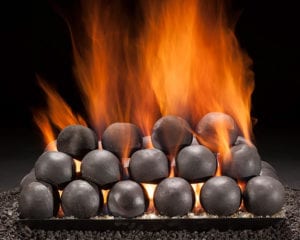
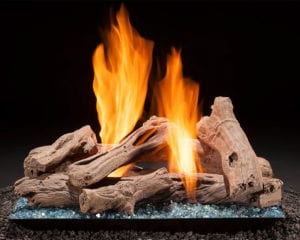
| Comparison Chart | Vented Gas Logs | Ventfree Gas Logs | Vented Fire Glass/Modern |
| For Heat | No | Yes | No |
| Ambiance & Radiant Heat | Yes | No | Yes |
| Indoor/Outdoor Use | Yes | Yes | Yes |
| Maintenance | 5-7 Years | Yearly | Only when a problem arises
|
| Cost to purchase | $600 + | $800+ | $300+ |
| Efficiency | Negative | 99.9% | Negative |
| Cost of Operation
Based on averages |
$1.25+ per hour | $0.50-0.75 per hour | $1.50+ per hour |
Quick Facts and Tips for Gas Logs and Modern Media:
- Gas logs and modern media will gather soot, with fire glass being the lone exception. This soot can be removed by using a soft dry brush on the cooled surfaces bearing soot. We also have sprays that can be used in some cases.
- If it’s a vented appliance, the damper must be fully opened when in operation.
- If it is a vented appliance, a damper clamp must be installed to satisfy a home inspection.
- Fire glass must have an average depth of 2.5” or greater to properly disperse the gas.
- Fire glass and gas logs will always be sold as a kit to include the proper burner. The pipe in your fireplace is just a feed line for the gas, not a burner.
- All chimneys must be swept prior to the installation of gas log or modern media (including fire glass), when switching from wood to gas.
- Vent free gas logs should not be installed into a wood burning manufactured fireplace.
You can visit our social media for more details.

